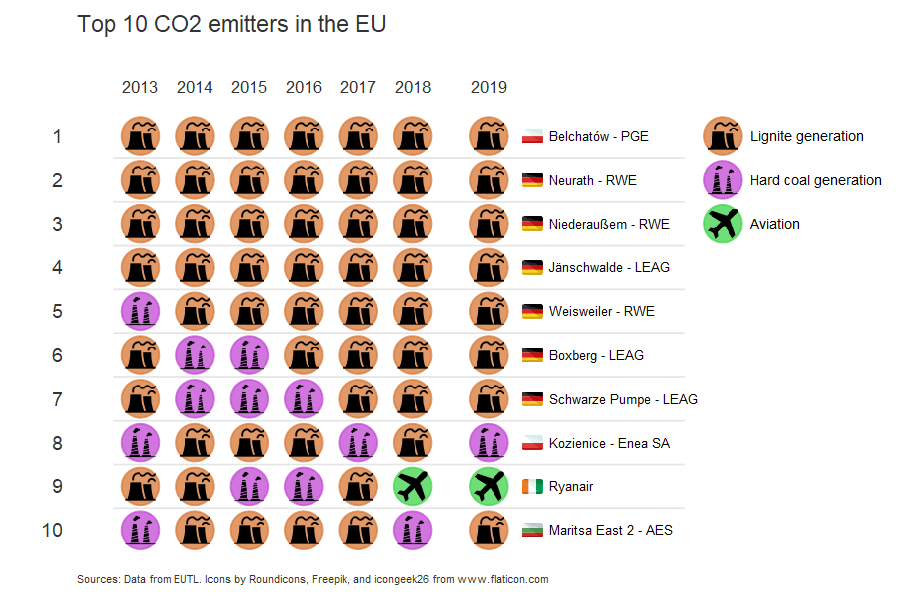
Breadcrumbs
EU ETS Emissions 2019
Europe’s coal power collapse exposes steel plants as Europe’s biggest emitters
Highlights
-29%
Fall in power sector emissions since 2013
-43%
Fall in coal power emissions since 2013
About
On Wednesday 1st April, the European Commission released preliminary 2019 emissions under the EU’s Emissions Trading System (ETS). The data covers emissions for around 96% of the ETS. The full data will be ready by 15th May. We back-filled the missing installations with last year’s emissions to create a full dataset.
Executive summary
Europe’s coal-to-clean transition is underway
We are well on the way to coal-free electricity; now we need to start on coal-free steel.
-
01
We are well on the way to coal-free electricity.
The data shows coal power emissions have fallen by 43% since 2013. However, coal power generation is still responsible for 30% of EU ETS emissions, so this job is far from finished. This is particularly true for lignite fuelled power stations which have seen slower emissions declines.
-
02
We now need to start on coal-free steel.
For the first time, the biggest emitter in both the Netherlands and Spain is revealed as a coal-fired blast furnace. Coal-fired blast furnaces are also the biggest emitters in the UK, France, Austria, Finland and Slovakia. The steel sector makes up 8% of EU ETS emissions.




